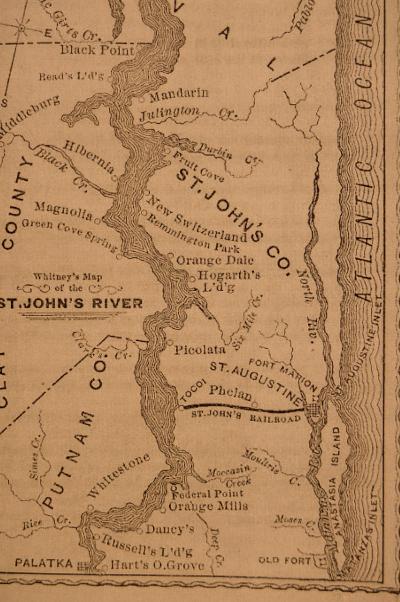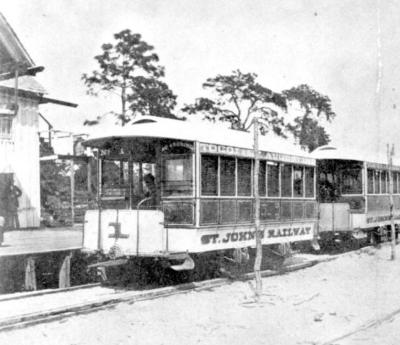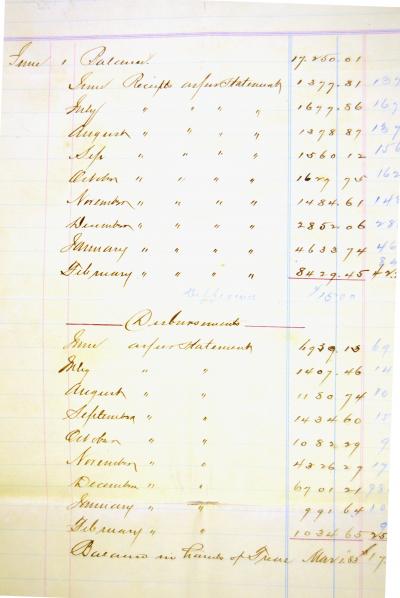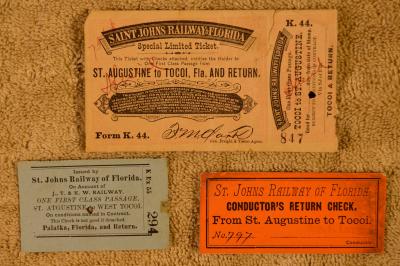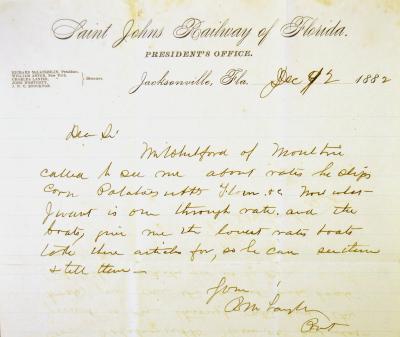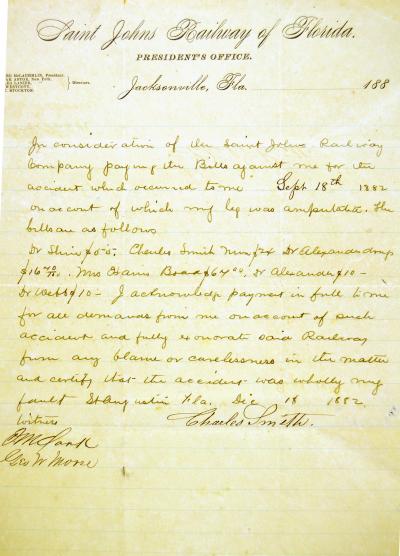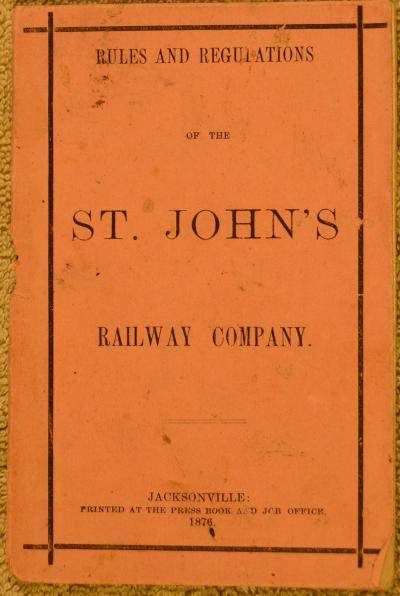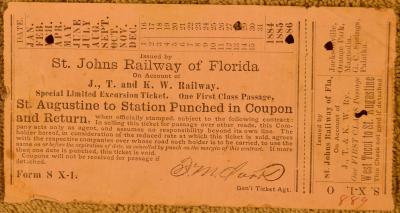The St. Johns Railway Company was not the first railroad to operate in Florida, but it has a number of firsts to its name.
It is one of only a few in the state to predate the Civil War.
Chartered in 1858, its wooden rails, capped eventually with scrap metal to limit wear, ran 14 and a half miles due west from a point on the west shore of the San Sebastian River opposite downtown St. Augustine to a community called Tocoi on the east bank of the St. Johns River.
It was the first railroad to serve the first city. The idea was to give ship passengers a safe way to reach the popular tourist destination without having to brave the notorious sand bars in the St. Augustine Inlet, which has wrecked many ships. Instead, passengers would sail into Jacksonville, and board one of the steamer river boats plying the St. John’s. They would cruse up stream to Tocoi and board the animal drawn tram for the slow and tiring but safe ride.
Courtesy Florida Memory
The accommodations were not luxurious. Note the wooden rails and the hitch for the mules. The trip could take several hours, with breaks both for the animals and the passengers. But apparently it was better than losing all your luggage in a ship wreck. Or drowning.
It was popular enough that the company resumed business after the Civil War (during which Union forces sailed up the St. Johns in 1862, destroyed the landing at Tocoi and shipped the metal from the tracks up to Union forces in North Carolina). By 1869 the owners had secured financing and were advertising: “ Wanted Immediately - Hands to work on the St. Augustine Rail-Road; liberal wages will be paid by the month.”
A 15 mile ride was not cheap. A ticket in 1870 cost $2.00, or about $34.00 in current money.
As a business, it worked. By the 1880’s the rails had been converted to a regular narrow gage line and two wood burning steam engines were regularly making runs. Then, as now, winter was the tourist season, with more steamboats working along the St. John’s, more tourists looking for rides, but as accounts found in the Library’s collection show
business went on all year round.
In the early 1880’s Richard McLaughlin was the President of Saint John’s Railway of Florida and much of the Library’s collection dates from that period.
Letters from his office signed by him definitely show a hands- on leader.
There is one letter that shows another side to the company. Interestingly enough, it is on President’s office stationary
and written in handwriting different from that of the signer, one Charles Smith, a railroad employee who lost a leg in an incident a few months before this letter was written. In it he lists medical bills (totaling less than $180 by the way) that the company has paid. In turn he says the accident was his own fault and he holds the company harmless. It does not mention any other compensation nor his continued employment by the railroad. The wording indicates it was written by a lawyer (“said Railway”, “certify that...”) obviously working for the railroad. By modern standards it appears there was little regard for the rights of the injured worker, and a 1876 Employee Rule Book
stipulates “any injuries (to employees) need be immediately reported to the main office before anyone receives any medical attention.”
Another stipulates “if an employee encounters a drunk passenger it is up to the employee to see that the passenger is safely removed from the train and kept separate from any other passengers.”
In short, there were lots of company rules that would now be considered outside the realm of what is right for employees.
The St. John’s Railway was purchased in 1888 by Henry Flagler as part of his strategy for building the Florida East Coast Railroad, i.e. buying up small railroads and using their tracks and routes rather than laying all new rail.
The St. John’s was not their first small line Flagler bought, but it was the first built. He included about 4 miles of it in the FEC line, and by 1895 it was clear there was little traffic for the rest of the route, and it was shutdown, becoming the first predecessor to the FEC to be abandoned.
The path of the line is not lost, however. Today it is King Street and County Road 214 running from the west shore of the San Sebastian River west to the St. John’s River at an area now known as Tocoi Point.
